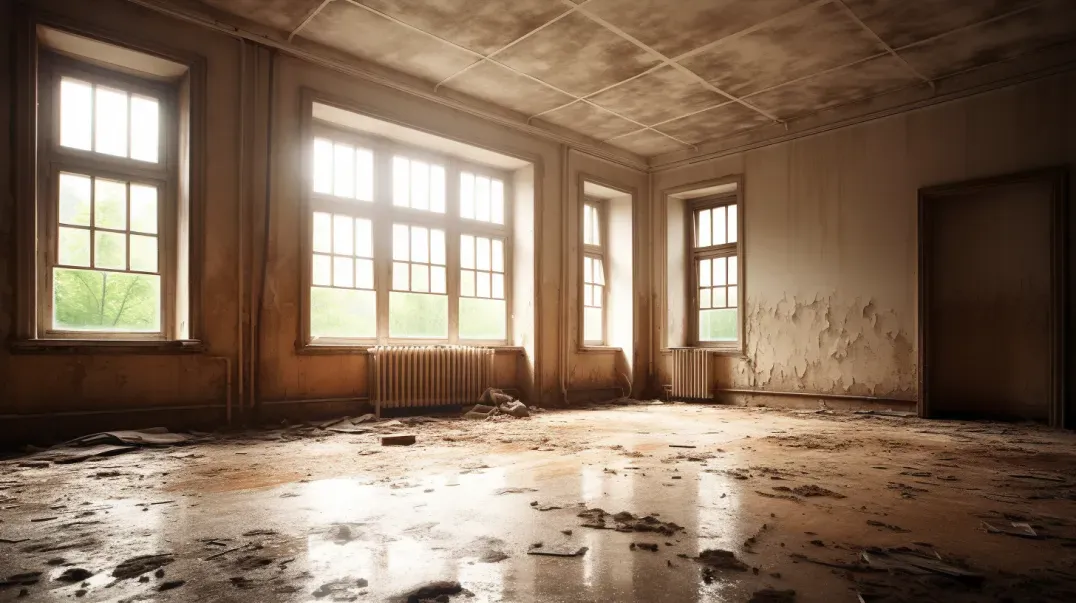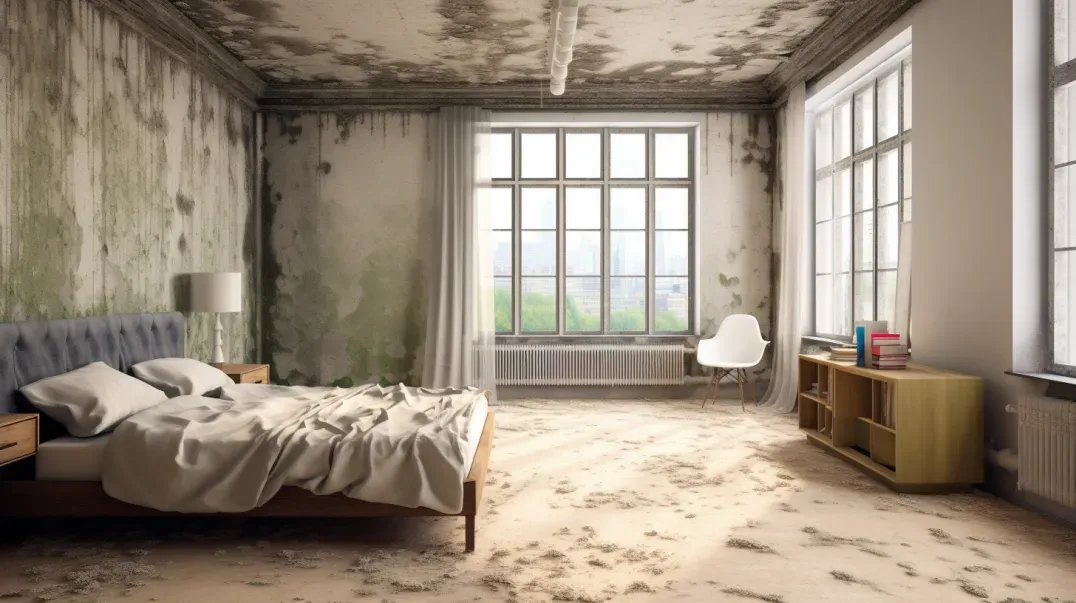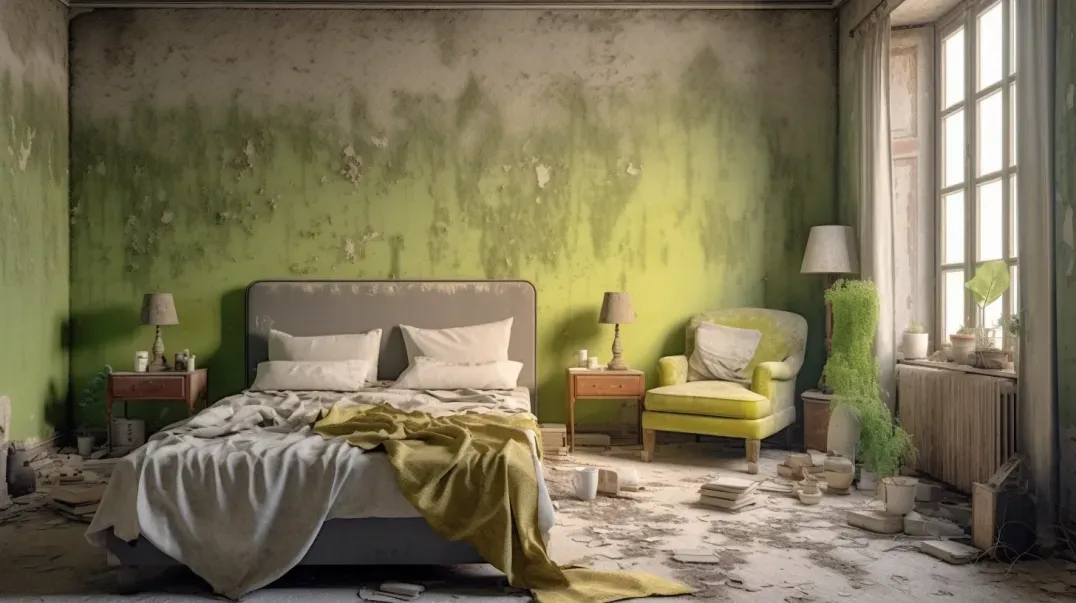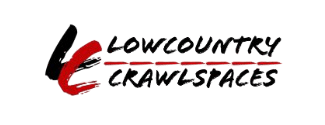Mold-Resistant Building Materials for New Homes
In the quest for healthier living spaces, the choice of building and decorating materials plays a pivotal role. Among these, mold-resistant materials stand out as a key ally in the battle against one of the most common and insidious household foes: mold. This silent intruder not only compromises the structural integrity of our homes but also poses significant health risks, ranging from allergic reactions to more severe respiratory issues. However, with the advent of mold-resistant materials, homeowners now have a powerful tool at their disposal to safeguard their health and their homes against the threat of mold.
This blog delves into the science and benefits of mold-resistant materials, exploring how these innovative solutions work to create a barrier against mold growth. By understanding the properties that make these materials resistant to mold, we can appreciate their importance in constructing and maintaining healthy living environments. From mold-resistant drywall and paints to flooring and insulation, we'll uncover how integrating these materials into your home can significantly reduce the risk of mold proliferation, ensuring a safer, cleaner, and healthier living space.
Join us as we navigate the world of mold-resistant materials, shedding light on how they contribute to healthier living environments. Whether you're building a new home, renovating an existing one, or simply looking to make your living space safer, this exploration will arm you with the knowledge to make informed decisions that prioritize health and well-being. Discover the peace of mind that comes with a mold-resistant home, where the air is cleaner, the surfaces are safer, and the environment is conducive to healthier living.
Understanding the Threat of Mold in New Constructions
Mold is often associated with older buildings, where years of exposure to moisture can lead to growth. However, new constructions are not immune to this pervasive issue. Understanding the conditions that can promote mold growth in new homes is crucial for preventing its long-term effects on both building integrity and occupant health.
Why Mold is a Concern in New Homes
Conditions in New Constructions That Can Promote Mold Growth: New constructions can have high levels of moisture due to the use of wet building materials and the drying out process of concrete, plaster, and other components. If this moisture is not adequately managed, it creates an ideal environment for mold growth. Additionally, modern, energy-efficient designs can sometimes lead to poor ventilation, further exacerbating moisture accumulation.
Long-term Effects of Mold on Building Integrity and Health: Over time, mold can cause significant damage to building materials, weakening structural components and leading to costly repairs. More importantly, mold poses serious health risks to occupants, including allergic reactions, respiratory issues, and in severe cases, toxic effects from certain mold types. Early detection and prevention are key to safeguarding both the physical structure of new homes and the well-being of their inhabitants.
Basics of Mold Growth
How Mold Develops and Spreads in Building Structures: Mold growth begins with mold spores, which are omnipresent in the environment. These spores require three things to grow: moisture, a food source (such as wood, drywall, or carpet), and suitable temperatures. In new constructions, ample food sources and the often-warm conditions provide a fertile ground for mold when moisture is present. Once established, mold can spread rapidly, infiltrating beyond surface areas into the building's core, making it difficult to eradicate and increasing the potential for structural damage and health problems.
Understanding the dynamics of mold growth and the specific challenges it poses in new constructions is essential for homeowners, builders, and property managers. By implementing strategies to control moisture, ensure proper ventilation, and use mold-resistant materials during the construction process, the risk of mold can be significantly reduced, protecting the investment in the property and the health of its occupants.
Key Mold-Resistant Materials for Home Construction
In the battle against mold, choosing the right materials during the construction or renovation of a home can make all the difference. Mold-resistant materials offer an added layer of protection, reducing the risk of mold growth and the health and structural issues it can cause. Here's a look at some of the key mold-resistant materials that can be incorporated into home construction for a safer, more durable living environment.
Mold-Resistant Drywall and Sheetrock
Composition and Benefits Over Traditional Drywall: Mold-resistant drywall and sheetrock are specially designed with a fiberglass face instead of the traditional paper face used in standard drywall, which mold feeds on. This composition significantly reduces the material's vulnerability to mold growth. Additionally, some mold-resistant drywall types are treated with antimicrobial agents to further inhibit mold.
Ideal Use Cases in Home Construction: Mold-resistant drywall and sheetrock are particularly beneficial in areas prone to moisture, such as bathrooms, kitchens, basements, and laundry rooms. Their use in these areas can help prevent the conditions that lead to mold growth, ensuring the longevity of the walls and the health of the home's occupants.
Mold-Resistant Paints and Primers
Types and Effectiveness in Various Environments: Mold-resistant paints and primers contain antimicrobial agents that prevent mold and mildew growth on the paint surface. These products are available in various types, including water-based and oil-based options, each suited to different environments and surfaces.
Application Tips for Best Results: For optimal mold resistance, it's crucial to start with a clean, dry surface. Apply mold-resistant primer before painting, especially in high-moisture areas. Follow the manufacturer's instructions for application and drying times to ensure the paint's mold-resistant properties are fully activated.
Mold-Resistant Woods and Lumber
Varieties of Wood That Naturally Resist Mold: Certain types of wood have natural mold-resistant properties, including cedar, redwood, and teak. These woods contain oils and compounds that inhibit mold growth, making them ideal for use in construction.
Use in Framing, Flooring, and Cabinetry: Mold-resistant woods can be used in various aspects of home construction, from framing to flooring and cabinetry. In addition to their mold-resistant properties, these woods offer aesthetic appeal and durability, making them a popular choice for both structural and decorative elements.
Incorporating mold-resistant materials into home construction is a proactive step towards creating a healthier, more durable living environment. By selecting materials like mold-resistant drywall, paints, and woods, homeowners and builders can significantly reduce the risk of mold growth and its associated health and structural risks.
Advanced Mold-Resistant Solutions
As homeowners and builders increasingly prioritize healthy and durable living environments, advanced mold-resistant solutions have become essential in combating mold growth. These innovative materials and technologies not only offer enhanced protection against mold but also contribute to the overall longevity and safety of homes. Here’s an exploration of advanced mold-resistant insulation, flooring options, and emerging materials that are setting new standards in mold prevention.
Mold-Resistant Insulation
Types of Insulation That Inhibit Mold Growth: Mold-resistant insulation is designed to resist moisture absorption, a key factor in preventing mold growth. Materials such as fiberglass insulation, which does not provide food for mold, and foam insulation boards that are treated with antimicrobial agents, are among the top choices for mold-resistant insulation.
Installation Guidelines for Maximum Effectiveness: To ensure that mold-resistant insulation delivers its intended benefits, proper installation is crucial. This includes sealing all gaps to prevent moisture ingress, ensuring adequate ventilation in the insulated areas, and covering insulation with moisture-resistant barriers where necessary. Following manufacturer-specific installation guidelines will also maximize the effectiveness of mold-resistant properties.
Mold-Resistant Flooring Options
Overview of Flooring Materials: The choice of flooring material can significantly impact the likelihood of mold growth, especially in high-moisture areas.
- Tiles: Ceramic and porcelain tiles are inherently mold-resistant and ideal for bathrooms, kitchens, and basements.
- Vinyl: Luxury vinyl flooring offers excellent moisture resistance and is suitable for damp areas.
- Engineered Wood: Designed to resist moisture better than traditional hardwood, engineered wood can be a viable option for areas with occasional moisture but should be used cautiously in high-moisture zones.
Considerations for High-Moisture Areas: In areas like bathrooms and kitchens, choosing flooring materials that are not only resistant to mold but also capable of withstanding constant exposure to moisture is critical. Proper installation and sealing are also vital to prevent water from seeping underneath, which could compromise the mold-resistant qualities of the flooring.
Innovative Materials and Technologies
Emerging Materials and Construction Technologies Offering Enhanced Mold Resistance: The construction industry is continually innovating, with new materials and technologies being developed to combat mold growth more effectively. These include:
- Antimicrobial Coatings: Applied to surfaces during construction, these coatings can inhibit mold growth on walls, ducts, and other structural elements.
- Moisture-Sensing Technology: Smart home technologies now include moisture sensors that can alert homeowners to potential water leaks or high humidity levels, allowing for quick action before mold has a chance to grow.
- Composite Materials: New composite materials designed for outdoor decking and indoor flooring offer superior resistance to mold, moisture, and decay, making them an excellent choice for areas exposed to the elements.
By incorporating these advanced mold-resistant solutions into home construction and renovation projects, homeowners and builders can significantly reduce the risk of mold growth, ensuring healthier and more durable living environments.
Integrating Mold Resistance into Home Design
Creating a mold-resistant home begins with thoughtful design and planning. By integrating mold-resistant strategies and materials from the outset, homeowners and builders can ensure that the finished home is not only aesthetically pleasing and functional but also durable and healthy. Here’s how to incorporate mold resistance into home design effectively.
Planning for Mold Resistance
Incorporating Mold-Resistant Materials in the Design Phase: The selection of mold-resistant materials should be a key consideration during the design phase of a home. This includes choosing mold-resistant drywall, paints, insulation, and flooring materials. Early integration of these materials into the design plans can prevent future mold issues and contribute to a healthier living environment.
Balancing Aesthetics, Functionality, and Mold Resistance: Achieving a balance between aesthetics, functionality, and mold resistance is crucial. Fortunately, mold-resistant materials come in various styles and finishes, allowing for design flexibility. For instance, mold-resistant paints are available in a wide range of colors, and mold-resistant flooring options include materials that mimic the look of natural wood or stone. By carefully selecting these materials, designers and homeowners can create spaces that are both beautiful and mold-resistant.
Mold-Resistant Building Techniques
Construction Practices That Reduce the Risk of Mold: Beyond the use of mold-resistant materials, certain building techniques can further minimize the risk of mold growth. These include:
- Ensuring Proper Ventilation: Designing a home with adequate ventilation, especially in high-moisture areas like bathrooms and kitchens, is essential. This can involve the strategic placement of windows, vents, and exhaust fans.
- Sloping Surfaces for Water Drainage: In areas exposed to water, such as showers and around the exterior of the home, surfaces should be sloped to promote water drainage away from the building.
- Importance of Proper Sealing and Moisture Barriers: Proper sealing of joints and the use of moisture barriers are critical in preventing water intrusion, a primary cause of mold growth. During construction, special attention should be paid to sealing gaps around windows, doors, and where different materials meet. Moisture barriers should be installed in foundations, roofs, and walls to prevent the accumulation of moisture within the building structure.
Integrating mold resistance into home design is a proactive approach to ensuring the longevity and healthiness of the living environment. By considering mold-resistant materials and building techniques from the design phase, homeowners can enjoy spaces that are not only visually appealing and functional but also resilient against mold growth. This strategic approach to design and construction not only protects the investment in the property but also the well-being of its occupants.
Maintenance and Upkeep of Mold-Resistant Homes
Investing in mold-resistant materials and construction techniques is a significant first step toward securing a healthy, durable home. However, the effectiveness of these measures can be compromised without proper maintenance and vigilance. Regular upkeep and attention to potential mold hotspots are crucial for ensuring the longevity of mold-resistant features and maintaining a mold-free environment. Here’s how homeowners can stay proactive in the care of their mold-resistant homes.
Ensuring Longevity of Mold-Resistant Materials
Routine Maintenance Tips for Preserving Mold Resistance:
- Keep Surfaces Clean and Dry: Regular cleaning of walls, floors, and other surfaces helps prevent the accumulation of dust and organic debris that mold can feed on. Immediately addressing spills and moisture accumulation is crucial.
- Maintain Ventilation Systems: Ensure that ventilation systems, including HVAC and exhaust fans, are clean and functioning efficiently to promote air circulation and moisture removal.
- Use Humidity Controls: Utilize dehumidifiers or air conditioners as needed to maintain indoor humidity levels between 30% and 50%, which is ideal for preventing mold growth.
Regular Inspections and Areas to Monitor:
- Check for Water Intrusion: Regularly inspect areas prone to water leakage, such as roofs, pipes, and windows. Early detection and repair of leaks can prevent moisture buildup that leads to mold.
- Monitor High-Moisture Areas: Bathrooms, kitchens, and basements require special attention. Look for signs of condensation, water stains, or peeling paint that may indicate moisture problems.
- Inspect Seals and Caulking: Ensure that seals around windows, doors, and fixtures are intact. Replace any cracked or peeling caulking to prevent moisture from seeping into walls and floors.
Addressing Potential Mold Hotspots
Identifying and Mitigating Common Problem Areas in Homes:
- Bathroom and Kitchen: Ensure proper ventilation and use mold-resistant caulking around sinks, bathtubs, and counters. Regularly clean and dry these areas.
- Basements and Crawl Spaces: Use moisture barriers and ensure good drainage around the foundation. Consider using a dehumidifier to control humidity levels.
- Attics: Ensure adequate insulation and ventilation to prevent moisture buildup from temperature fluctuations. Inspect for roof leaks regularly.
By identifying and addressing these common problem areas, homeowners can significantly reduce the risk of mold growth. Implementing routine maintenance and regular inspections of potential hotspots are key strategies for maintaining the effectiveness of mold-resistant materials and ensuring the long-term health and durability of the home.
FAQs
Contact Lowcountry Crawlspaces Today!
Lowcountry Crawlspaces will do everything we can to ensure your experience with us is excellent.
Request A FREE Estimate
CHECKOUT RECENT POST



Schedule Your FREE Crawl Space Evaluation Today
There Is No Crawl Space Job We Can’t Fix!




